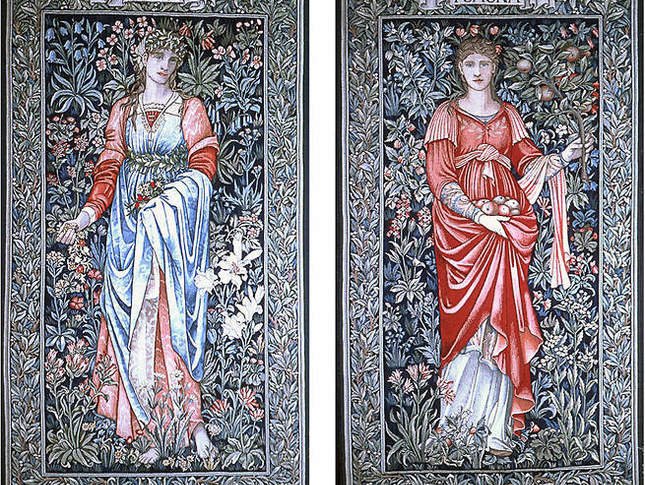THE AESTHETIC MOVEMENT
1860-1900
By the mid 19th Century, many European artists found Victorian society and modern industrialism to be soulless. They wanted art to be something more than a series of vacant landscapes and stiff portraits built on classic compositions. They also recoiled at the ostentation of Victorian homes and furnishings. To them, it appeared as if the ideals of classic art had been so distorted by over-the-top Victorian sensibilities that everything had become ugly. According to Oscar Wilde, a leading literary Aesthetic, “I have found that all ugly things are made by those who strive to make something beautiful and all beautiful things are made by those who strive to make something useful.”
The Aesthetics sought to reverse course by worshipping beauty for its own utility. They wanted to make “art for art’s sake.” In this pursuit, they developed an artistic style featuring extreme detail, vivid colors and sensuous compositions. In so doing, they had a dramatic effect on English society by bringing new home decorating and furnishing styles to the forefront. Indeed, one of the leading Aesthetic artists, Dante Gabriel Rossetti, formed a partnership with fellow artist William Morris to create decorative arts. The partnership eventually foundered due to Rossetti’s romantic ties to Morris’ wife, Jane.
The Aesthetics included artists, poets, architects, furniture and wallpaper designers. Their flamboyant style and passionate outlook on life ended up having a large effect on English society, while opening the doors for the eventual Arts and Crafts movement in Europe and America, as well as new forms of modern art unbound from the moralistic fervor of the Victorian age. It’s important to note that the Aesthetic art movement began at approximately the same time as the Impressionist movement in France. Both movements were reactions to the more stilted and classic art of their day.
Although Aesthetic art is realistic in form if not subject, it’s “art for art’s sake” sensibilities combined with the increasingly abstract notions of the Impressionists to create a path forward for modern art.
Leading Aesthetic Artists:
Dante Gabriel Rossetti
James Whistler
William Morris
Aubrey Beardsley
Simeon Solomon
Alfred Joseph Morris
GF Watts






